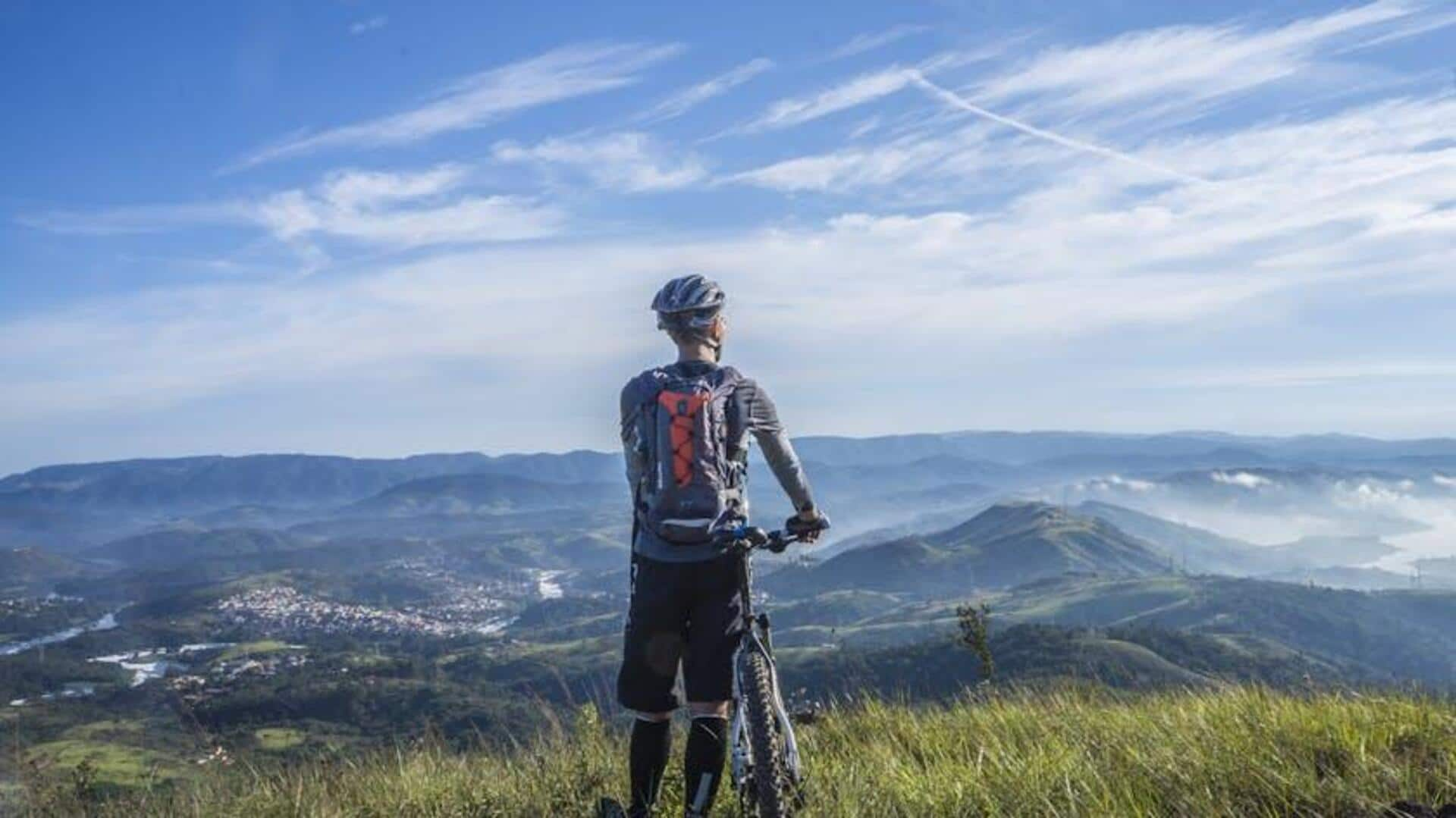
Exploring post-fire landscapes on two wheels
What's the story
Cycling through charred landscapes provides a firsthand look at nature's resilience and recovery following wildfires. This unique experience combines physical challenge with education about the transformative ecological processes that occur after a fire. The landscapes, while exhibiting a stark beauty in their own right, also serve as a testament to nature's regenerative power, offering a humbling and inspiring journey through areas rebounding from destruction.
Gear up
Preparing for your ride
Before you embark on a journey through charred landscapes, make sure you're equipped with the right gear. A mountain bike with durable tires is crucial for handling the potentially rugged terrain. Long sleeves and pants will shield your skin from the sun and any flying debris. Don't forget to pack plenty of water - hydration options might be limited in these desolate areas.
Ecology insight
Understanding regrowth stages
Burnt forests undergo several stages of ecological succession before returning to their pristine state. At first, you'll see nothing but ash-covered ground, but soon enough, pioneer species begin to sprout. These are usually hardy plants that rapidly colonize open spaces. As you bike through different regions, you'll see the progression of plant life from ferns and grasses to shrubs and eventually back to majestic trees over years or even decades.
Safety first
Navigating safely through burnt terrain
Cycling in post-fire landscapes requires extra vigilance. Watch out for unstable ground, hidden hazards under ash, and weakened trees that can topple without warning. Stick to established trails or paths, deemed safe by local authorities or park services. And always let someone know your route before heading out, ensuring a safer journey through these recovering terrains.
Photography tips
Capturing the journey
Capturing your journey through these distinct landscapes can be profoundly fulfilling but necessitates a mindful approach. High-contrast scenes featuring burnt trees set against fresh growth generate impactful images, narrating a poignant tale of resilience and rebirth. Early morning or late afternoon light offers a gentle luminosity that amplifies textures and details within the landscape.
Leave No Trace
Respecting nature's recovery process
When visiting burnt forests, it's crucial to adhere to Leave No Trace principles even more conscientiously. Refrain from disrupting any new plant growth or wildlife habitats beginning to heal in these sensitive areas. Stay on established trails where allowed, remove all trash including biodegradable items like fruit peels or nut shells, which could potentially disrupt the natural regrowth processes.